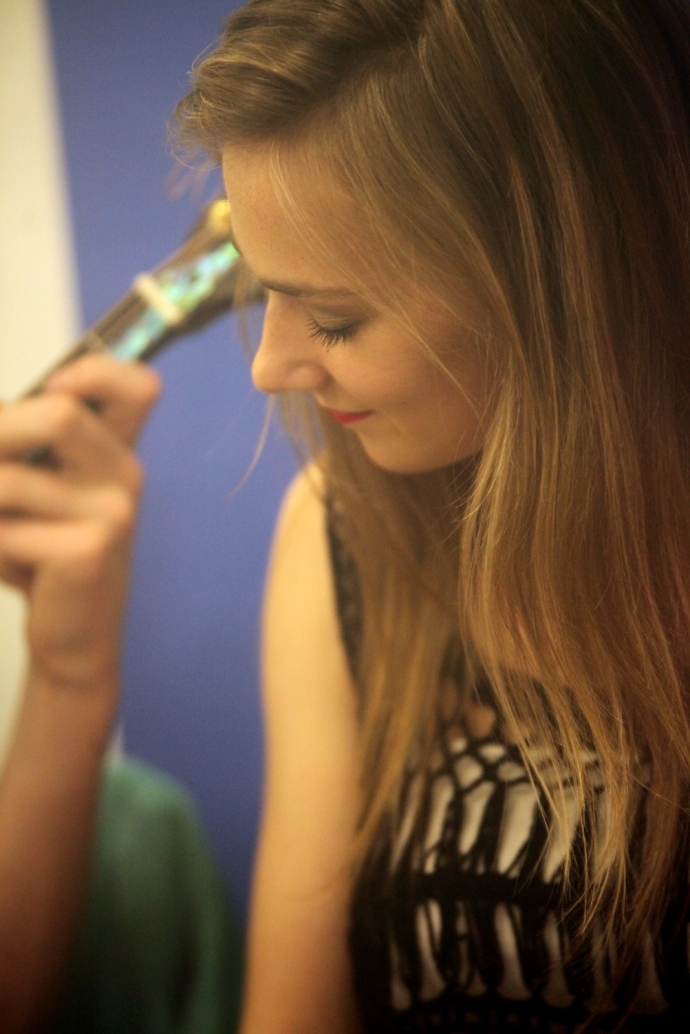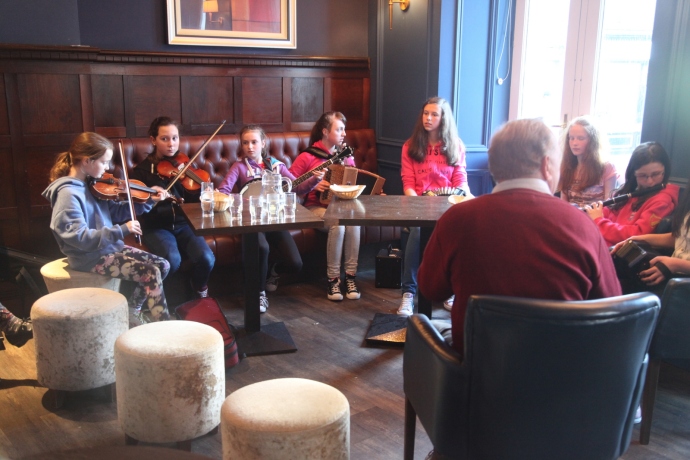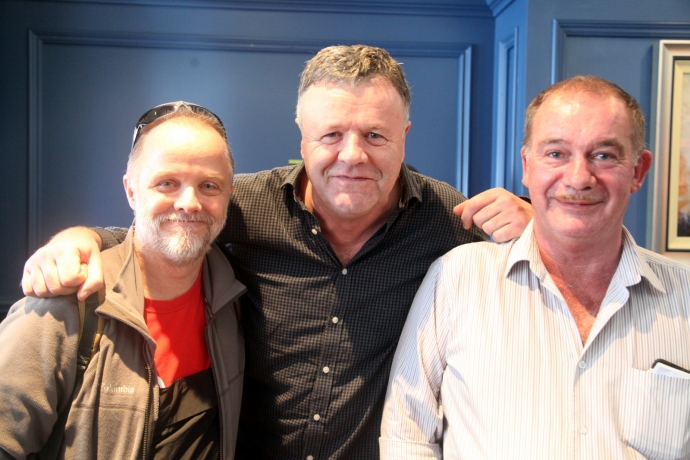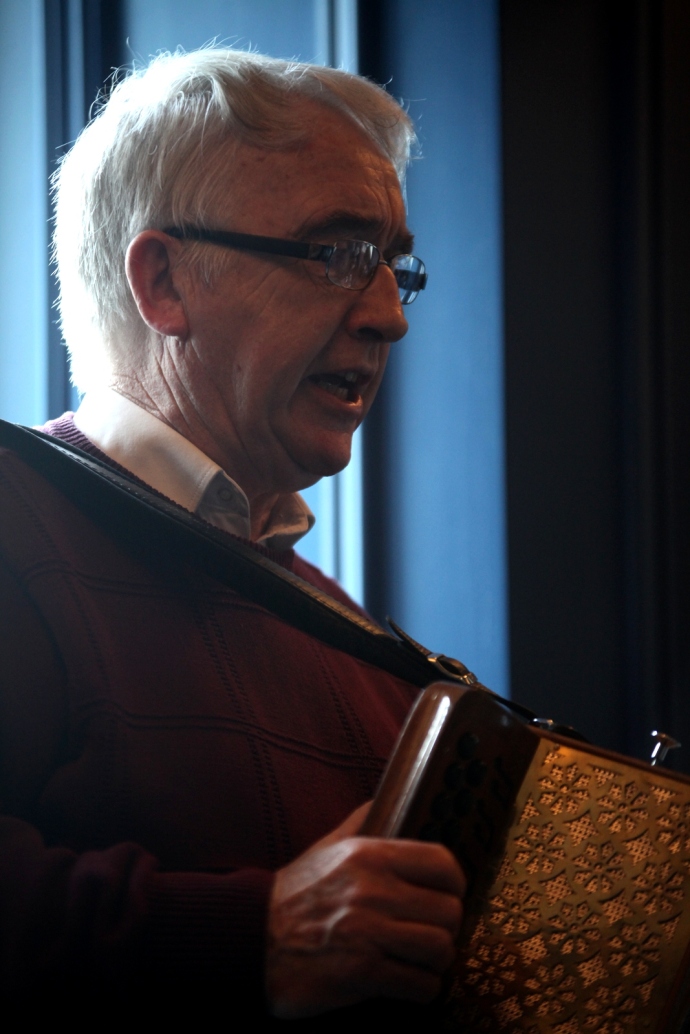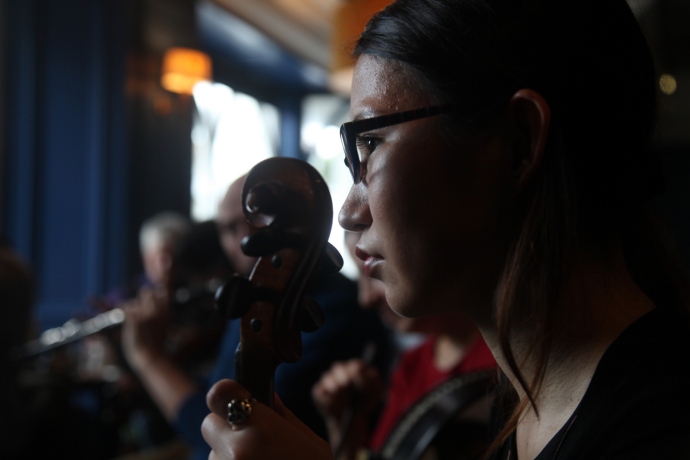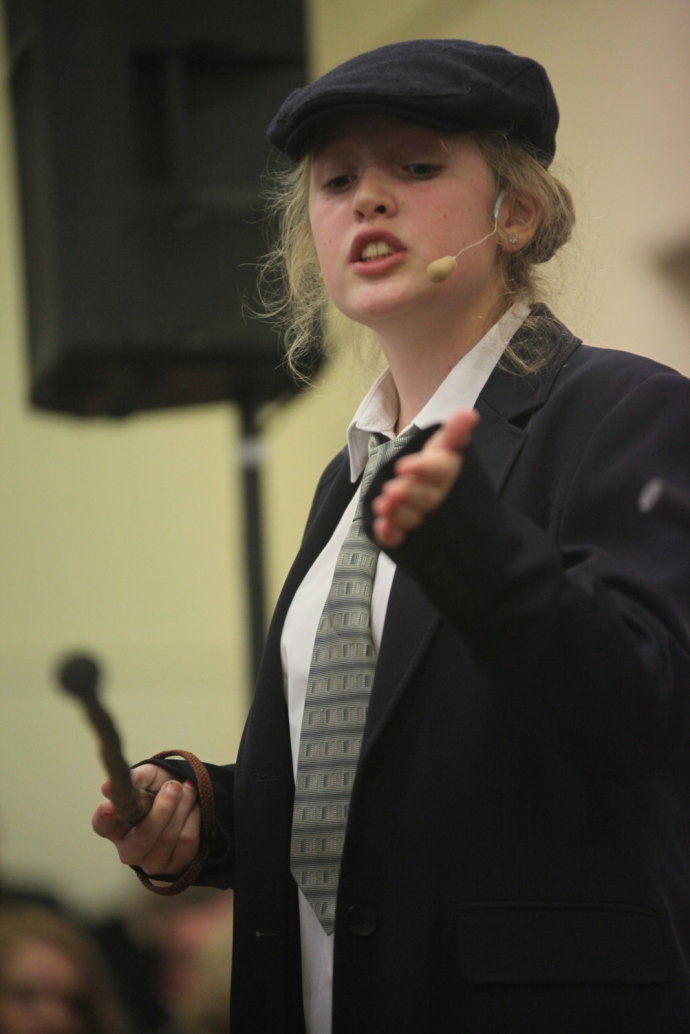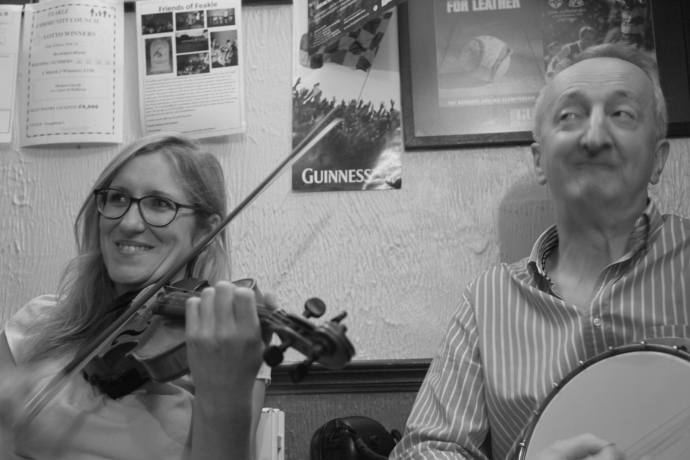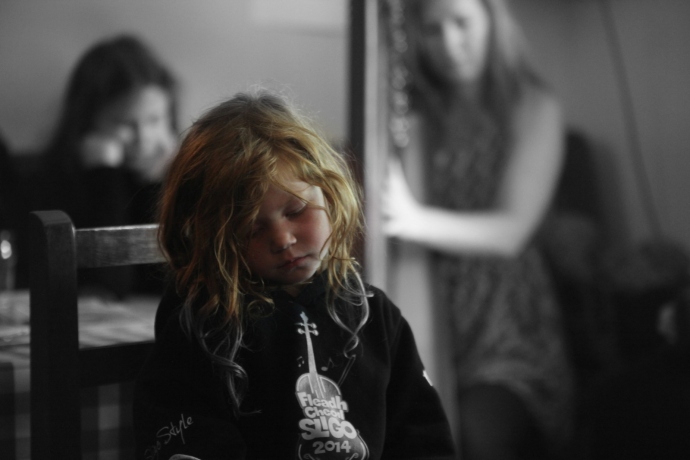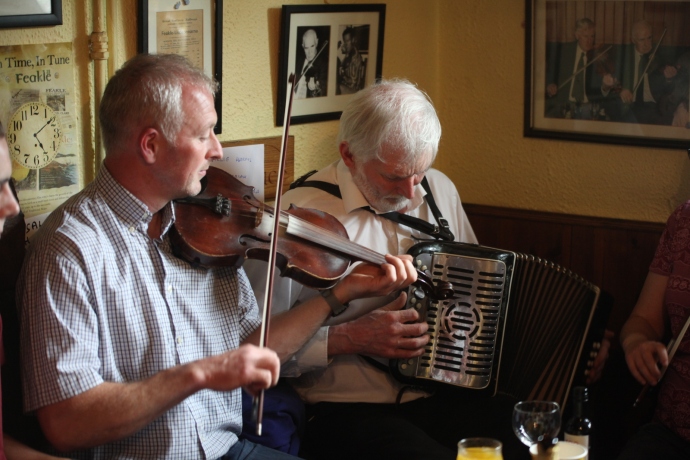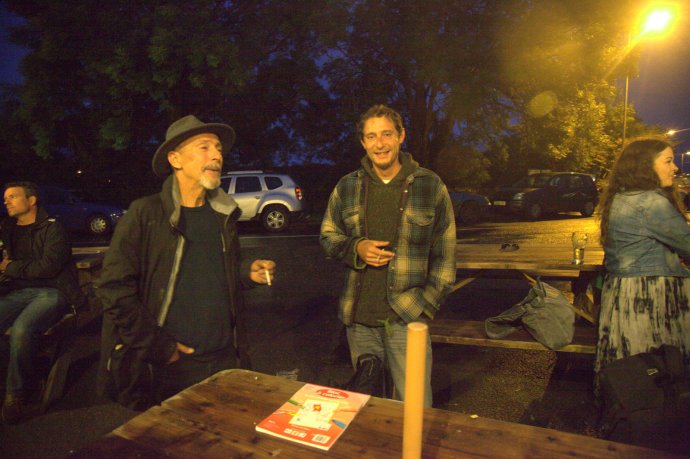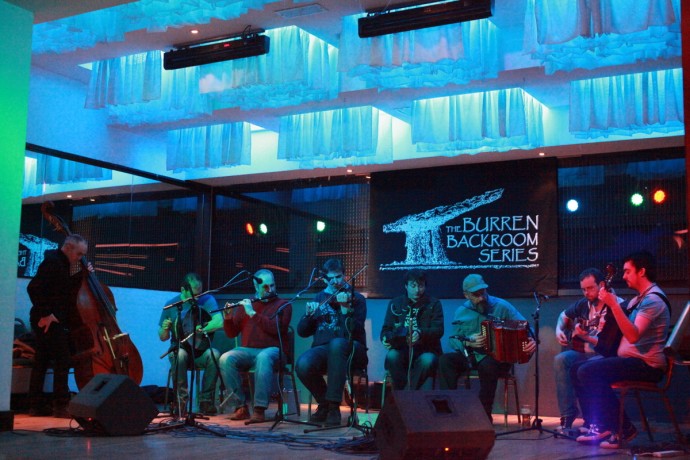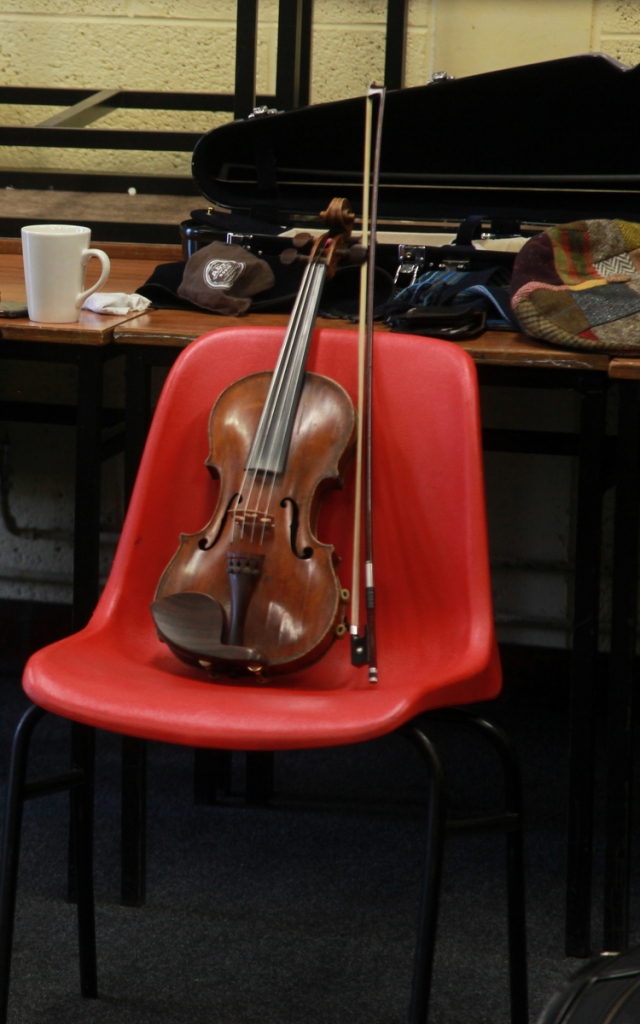
Part 1: The path to being a better fiddler?
OK so this is my 100th blog. It’s hard to believe that I have pressed that Publish button 100 times since I’ve come to Ireland.
I wondered what I should write about for this centennial event and really the answer was pretty obvious. I came here specifically to immerse myself in Irish music and to learn to play the fiddle ‘properly’. To catch up on all the lost years when near enough was good enough for Aussie Bush Music and to learn from players steeped in the tradition. I realise that this may not be of great interest to many of my blog readers, so sorry about that, but I know there are many musician friends who would love to do what I have done and might be interested in the results.
So has it worked? Am I a ‘better’ fiddler?
This is hard for me to write because there is no absolute here. I can only talk about how I feel. For me ‘better’ is ‘am I sounding more like I want to sound?’, not ‘am I technically better?’. So I thought I would approach it first by talking about the process. It has been fascinating for me learning how to learn; learning how to listen and the whole process of getting inside the music.
I’m not the first to do this of course and there is a school of thought that adult foreigners can never really learn to play Irish music because they didn’t grow up with it. It’s not in them. Well there are plenty of top-notch musicians based all around the world who play Irish music at a high level so the jury’s out on that one.
Despite playing on and off for forty years I came here as a beginner. Since my arrival I have wrapped myself in the music. I have been to dozens of Festivals and concerts and I have attended hundreds of sessions. I have done workshops, private lessons and seen and played with so many musicians of quality. Something should have rubbed off.
I know it’s a cliché but this is truly a journey. As I progressed there have been some clear stages in the process. While this is obviously just based on my own experience and it may or may not apply to others setting out on the same voyage, I, nevertheless, think there are some fundamentals here worth sharing with those who have learnt their Irish music elsewhere but are serious about improving their understanding of the music and lifting their playing to another level.
I have recognised six stages in this Immersion process. The process is naturally a continuum but it is helpful to think of it in stages. Maybe all stages are not applicable to all however, especially if they may have been lucky enough to have had lessons from, or played with class trad players. If not then they have picked up their music from books, CDs and local sessions, like me.
This is not rigid. The stages can overlap and you may go back occasionally but I think each stage is a fundamental precursor to the next. You can’t jump ahead. If nothing else it will put some context around the difficulties adults have in learning Irish Music.

Stage 1. Delusion
Many when they arrive here are deluded that they can actually play Irish music. This is soon put into stark reality anywhere in Ireland, but particularly here in Clare, where the standard of musicianship is so high. You come to Ireland with your packet of tunes and firstly no one plays them or you are playing with the wrong rhythm, and when you start one you find yourself often without support. Undaunted you play on and wonder why the session comes to a halt. Or you come into the session with your pile of tune books and turn to page 11 and play the set to a largely disinterested pub (I have seen this on a number of occasions!). Most people realise pretty quickly that there is a problem here and back off but unfortunately some don’t. They don’t read the signs and plough on regardless getting nothing out of being there. Hopefully one moves out of the Delusion stage quickly. In fairness some people may skip this stage either because they realise they can’t play and that’s why they’re here or they are truly advanced players.
Stage 2. Confusion
Delusion transitions into Confusion. You have realised you can’t cut it but you are unsure of the way forward. There are hundreds of tunes you have never heard, you can’t even recognise the ones you know and when you do you can’t play along because the rhythm is different or it’s too fast. You realise that the countless hours you spent learning tunes back in Australia is pretty much irrelevant. You sit endlessly waiting for a tune you know and trying to join in, keep up. It is hard not to avoid being a bit star-struck when you realise who you are playing with and you freeze when asked to play a tune. In fact after a while you are grateful just not being asked to leave. You hear a tune you like and if you are lucky enough to get someone who knows a name you look it up on The Session or Tunepal and learn it. Weeks later you find you have a different version or it sounds nothing like you thought it did. At this point you feel sometimes like opting out. The danger here is that Confusion can lead to Disillusion and then it’s all over. Unfortunately for many short-term visitors, this is where it ends. They go home, not really having learnt anything and confused about the way forward and then fall back into the comfort of playing with their musician friends back home and contented in their mediocrity.
If they are lucky this process ends soon enough; but for me it was at least six months. But the fiddle has that pull and you can’t stop. You keep going to sessions. Gradually you are starting to recognise tunes even if you can’t play them. You are now entering the next Stage.
Stage 3. Absorption
It is hard to know when you have passed out of Confusion to Absorption but one of the fundamental triggers is a realisation that it is actually OK if you don’t play on every tune. That it is OK to just sit and listen. And it is also accompanied by a change in the way you listen. I’ve been listening to Irish music since I was in my 20s but I was never really ‘listening’. I was hearing it yes. Listening involves feeling it and catching little nuances, all the different layers and the way the sound works. It means hearing the structure of the tune, recognising the patterns in the tune and how they are put together rather than just focusing on the notes. And then listening to it again and again. I remember some wise words at a lesson from Siobhan Peoples, telling me to lie out on the grass (when it wasn’t raining) and just listen, eyes shut, to the sounds: dogs, birds, cattle, tractors, insects, wind, cars in the distance. It is amazing how much the brain automatically filters out and we have to retrain it.
With this listening skill, comes recognition of tunes and gradually an understanding of the structure of the tunes: chords, arpeggios, links, turnarounds, ornamentation and dynamics and this then flows on to improved bowing, tone and intonation. Along with this comes the ability to pick up tunes by ear, something I was never very good at, needing the music in front of me. And then you find yourself playing tunes that you don’t actually remember learning. This is a wonderful time. It’s when the music starts to grow inside you and your whole body becomes at one with the tune and the conscious and the subconscious start to work together as your fingers automatically find the notes. The breakaway from the dots and the skill of picking up the music by ear is absolutely essential and there is the realisation that until you can do this you won’t be able to play.
Stage 4. Consolidation
Then comes the Consolidation. You can now listen and truth is you are starting to play along with maybe 60, 70, 80% of tunes in a session. But you still don’t ‘know’ them. You can’t play most of them alone if asked. This is the exciting stage but you are still not a musician. You can’t start a tune for the life of you but you play along with hundreds. Don’t be fooled that you can play Irish music because you still can’t. But what’s also happening parallel with this is you are developing a style. Whether you consciously have chosen to play in a certain way or not your own style is developing. This comes from listening and remembering the bits you liked; subconsciously. And soon your fingers are doing it automatically. And all those hours you spent on bowing patterns and ornamentation is paying off, you are doing it without thinking. Development of your style also comes from the choices we make of which sessions to go to. If you like the ‘East Clare’ style (whatever that is) then you will be drawn to those players and will make intuitive stylistic choices on that basis. Maybe you’ve found that nyaah you’ve been searching for.
Practice at this time becomes a joy. You play along with CD’s or recordings and eschew the printed versions. This helps reinforce the learning process. It is a feeling like no other when you play a tune that a couple of months ago would have been impossible. But you can’t get carried away with yourself and who knows how long this Consolidation phase will last. I have spent the majority of my time at this stage and but I think I am still quite a way from entering the next Stage. At least I know what I have to do to get there.
Stage 5 Explosion and Stage 6 Exploration
The last two stages Explosion and Exploration are theoretical at this point as I haven’t reached them yet. To me they seem the logical extension of the first four stages. Arguably when you reach the Explosion stage you are a fiddler. I use this term because by this time you have hundreds of tunes in your head bursting to get out. You are listening to new tunes all the time outside the session situation and learning them off CDs and taking them back to sessions. You are rapidly picking up new tunes at sessions. Maybe playing them after hearing them a couple of times and remembering them next time they are played. You are starting sets you haven’t planned and effortlessly launching into tunes because it seems right not because this one always follows that. If asked you could lead a session.
Technically, you have sorted your problems of tone and intonation. You play with feeling. You have your own style and tempo that works for you but you can readily adapt to a session that is fast or slow if required. You can change key if required or if someone starts the tune in G minor instead of E minor. Many will be happy to rest here.
The last stage I imagine is when you explore the boundaries of your fiddle playing. Try different things, maybe reinterpret tunes your way. Play music from different traditions. This is not to say you have to become a virtuoso but it is about exploring your own capabilities and that of the instrument.
Hopefully you hover between Exploration and Explosion for the rest of your playing days.
I look forward with eagerness to these last two stages.

Anyway that’s it. I stress again that this is how it seems to be working for me. Maybe it’s not the same for everyone but the sooner you realise you can’t just jump from Beginner to Player by attending a few session the better
The problem for many is that most can’t do what I have done. They can’t give up two or more years of their lives. So they learn in tiny increments. I’m not saying you can’t become an Irish Fiddler but immersion with loads of practice can shortcut a process that would otherwise take many, many years.
So where am I now as a player?
I have already said that I feel I am still in the Consolidation Stage but striving to enter the Explosion phase. Initially I was obsessed with not knowing the tunes and trying to build up a repertoire, but I wasn’t improving as a fiddler so of late I have been practicing tunes I know and playing them over and over until they sound how I want them to sound. Of great value to me were the words of Yvonne Casey, “Love every note; feel every note”. And that has become my mantra. Caoimhin O’Raghallaigh was also inspirational in showing me how many choices are available when we play a note and not to be afraid to experiment in terms of dynamics and bowing. And how could I forget Martin Hayes who spoke with so much wisdom about being clear on the sound we want to make even singing it out.
The greatest buzz I get from playing Irish music is with others and creating a sound together. That means listening to them and listening to yourself and ensuring your playing is both sympathetic and empathetic. Often this can’t be achieved in a large session.
So here’s the bottom line. For the first time in my playing life, I like the sound I make. I am getting closer to how I want to sound. So at the risk of sounding immodest, Yes I think I am a ‘better’ fiddler.
Part 2 will look at some specific things that I have found over the last two years that have helped my playing.I will address this in a future blog.


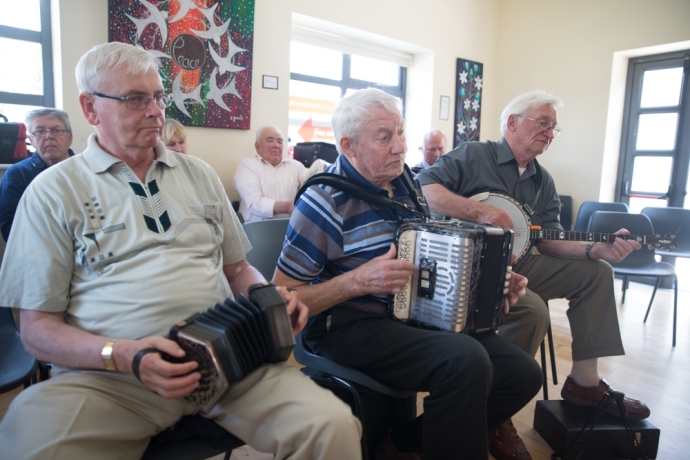














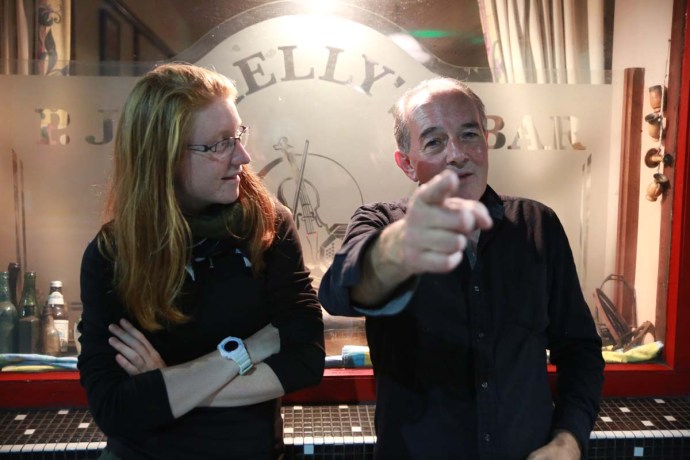





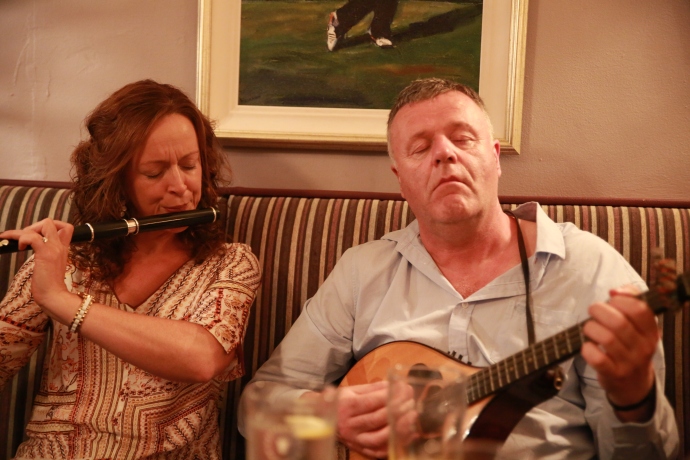






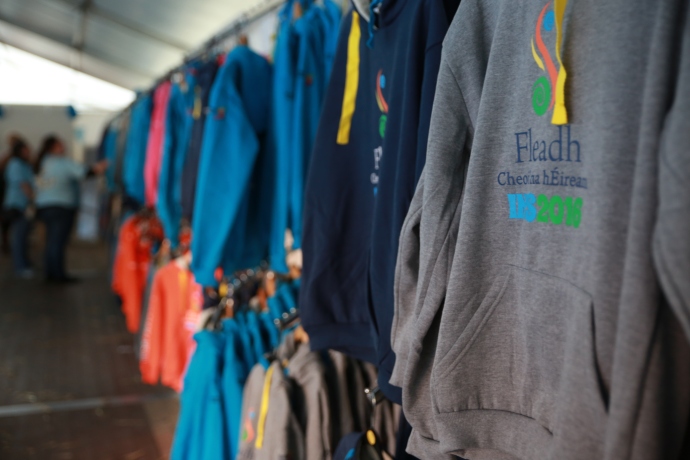






















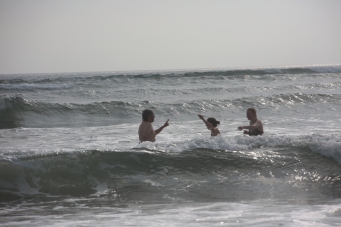


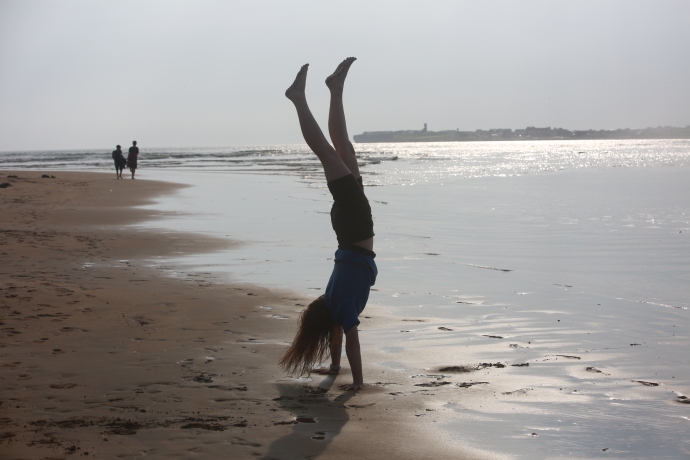













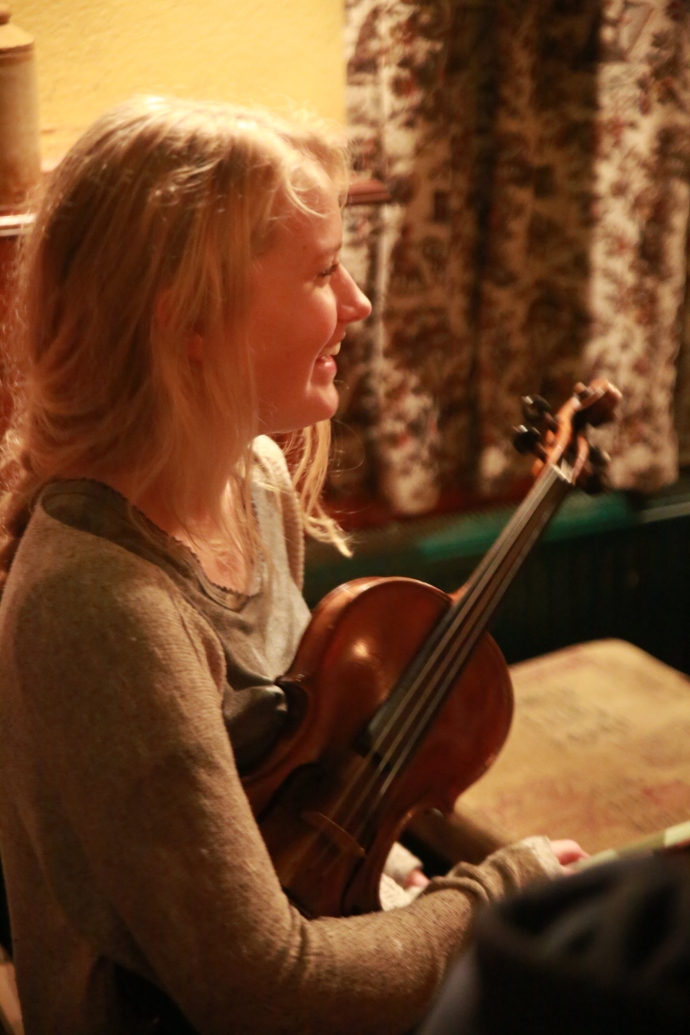




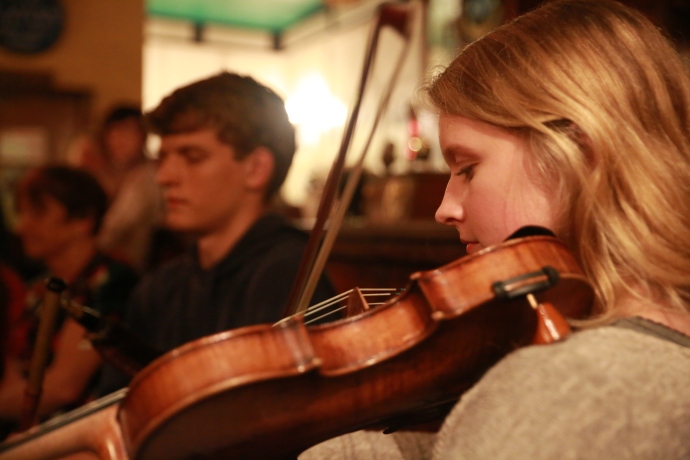












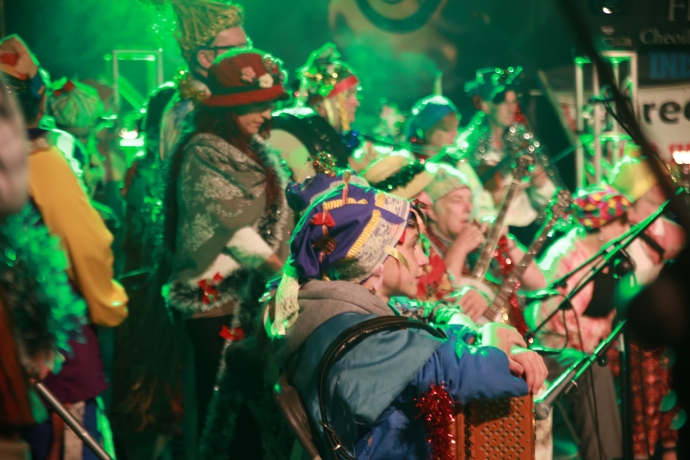



















































![1-20151115_224737 [153964]](https://singersongblog.files.wordpress.com/2015/11/1-20151115_224737-153964.jpg?w=690&h=388)
![2-20151116_000042 [154216]](https://singersongblog.files.wordpress.com/2015/11/2-20151116_000042-154216.jpg?w=690&h=388)
![3-20151116_002859 [154402]](https://singersongblog.files.wordpress.com/2015/11/3-20151116_002859-154402.jpg?w=690&h=388)
![4-20151115_224716 [156166]](https://singersongblog.files.wordpress.com/2015/11/4-20151115_224716-156166.jpg?w=690&h=388)
![6-20151116_002831 [165153]](https://singersongblog.files.wordpress.com/2015/11/6-20151116_002831-165153.jpg?w=690&h=388)























































